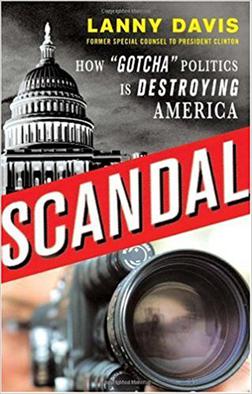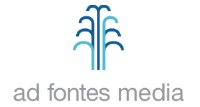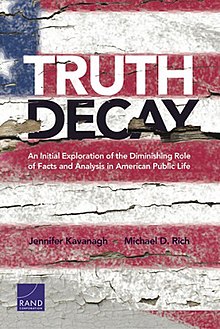Journalism is the production and distribution of reports on the interaction of events, facts, ideas, and people that are the "news of the day" and that informs society to at least some degree of accuracy. The word, a noun, applies to the occupation, the methods of gathering information, and the organizing literary styles.
Media bias occurs when journalists and news producers show bias in how they report and cover news. The term "media bias" implies a pervasive or widespread bias contravening of the standards of journalism, rather than the perspective of an individual journalist or article. The direction and degree of media bias in various countries is widely disputed.

In journalism and mass media, sensationalism is a type of editorial tactic. Events and topics in news stories are selected and worded to excite the greatest number of readers and viewers. This style of news reporting encourages biased or emotionally loaded impressions of events rather than neutrality, and may cause a manipulation to the truth of a story. Sensationalism may rely on reports about generally insignificant matters and portray them as a major influence on society, or biased presentations of newsworthy topics, in a trivial, or tabloid manner, contrary to general assumptions of professional journalistic standards.

Citizen journalism, also known as collaborative media, participatory journalism, democratic journalism, guerrilla journalism or street journalism, is based upon members of the community playing an active role in the process of collecting, reporting, analyzing, and disseminating news and information. Courtney C. Radsch defines citizen journalism "as an alternative and activist form of news gathering and reporting that functions outside mainstream media institutions, often as a response to shortcomings in the professional journalistic field, that uses similar journalistic practices but is driven by different objectives and ideals and relies on alternative sources of legitimacy than traditional or mainstream journalism". Jay Rosen offers a simpler definition: "When the people formerly known as the audience employ the press tools they have in their possession to inform one another." The underlying principle of citizen journalism is that ordinary people, not professional journalists, can be the main creators and distributors of news. Citizen journalism should not be confused with community journalism or civic journalism, both of which are practiced by professional journalists; collaborative journalism, which is the practice of professional and non-professional journalists working together; and social journalism, which denotes a digital publication with a hybrid of professional and non-professional journalism.

Public Opinion is a book by Walter Lippmann published in 1922. It is a critical assessment of functional democratic government, especially of the irrational and often self-serving social perceptions that influence individual behavior and prevent optimal societal cohesion. The detailed descriptions of the cognitive limitations people face in comprehending their sociopolitical and cultural environments, leading them to apply an evolving catalogue of general stereotypes to a complex reality, rendered Public Opinion a seminal text in the fields of media studies, political science, and social psychology.
Fact-checking is the process of verifying the factual accuracy of questioned reporting and statements. Fact-checking can be conducted before or after the text or content is published or otherwise disseminated. Internal fact-checking is such checking done in-house by the publisher to prevent inaccurate content from being published; when the text is analyzed by a third party, the process is called external fact-checking.
Media democracy is a democratic approach to media studies that advocates for the reform of mass media to strengthen public service broadcasting and develop participation in alternative media and citizen journalism in order to create a mass media system that informs and empowers all members of society and enhances democratic values.
Journalistic objectivity is a considerable notion within the discussion of journalistic professionalism. Journalistic objectivity may refer to fairness, disinterestedness, factuality, and nonpartisanship, but most often encompasses all of these qualities. First evolving as a practice in the 18th century, a number of critiques and alternatives to the notion have emerged since, fuelling ongoing and dynamic discourse surrounding the ideal of objectivity in journalism.
Advocacy journalism is a genre of journalism that adopts a non-objective viewpoint, usually for some social or political purpose.
Journalistic ethics and standards comprise principles of ethics and good practice applicable to journalists. This subset of media ethics is known as journalism's professional "code of ethics" and the "canons of journalism". The basic codes and canons commonly appear in statements by professional journalism associations and individual print, broadcast, and online news organizations.
Claims of media bias generally focus on the idea of media outlets reporting news in a way that seems partisan. Other claims argue that outlets sometimes sacrifice objectivity in pursuit of growth or profits.
Michael D. Rich is President Emeritus at RAND Corporation. Rich was the fifth president and CEO of the Santa Monica, California-based research institution, succeeding James A. Thomson, who had led RAND from 1989 to 2011. Rich was appointed as President and CEO in November 2011 and served in that role until his retirement in 2022. Rich was succeeded by current RAND President and CEO Jason Gaverick Matheny.
Peace journalism is a style and theory of reporting that aims to treat stories about war and conflict with balance, in contrast to war journalism, which peace journalism advocates say display a bias toward violence. The theory proposes practical methods for correcting biases in stories appearing in the mainstream and alternative media, and suggests ways for journalists to work with other media professionals, audiences, and organizations in conflict.

Scandal: How 'Gotcha' Politics Is Destroying America is a 2006 book by Lanny Davis, a lawyer who was special counsel to Bill Clinton, an appointee under George W. Bush, and advisor to Hillary Clinton during her then-upcoming 2008 campaign. The theme of the book is "that both [major political] parties [in the United States] have to learn to have civil debate, the[n] solve people's problem[s]," by working together in a bipartisan fashion. Moreover, Davis predicts that centrist 'purple' politicians could build a winning bipartisan coalition in that manner, in particular by winning over 'angry' independent voters fed up with scandal-mongering and incivility.

Political journalism is a broad branch of journalism that includes coverage of all aspects of politics and political science, although the term usually refers specifically to coverage of civil governments and political power.
Civil discourse refers to respectful conversation aimed at fostering understanding and constructive communication, where individuals within a group share different perspectives, enhancing the learning experience. It is a fundamental aspect of freedom of speech, characterized by dialogue that supports the societal good." Members of the U.S. Supreme Court session in 2011 aptly described civil discourse as "robust, honest, frank and constructive dialogue and deliberation that seeks to advance the public interest." Arguments are grounded in reason and evidence, adhering to strict guidelines for the appropriate behavior to be practiced. In contrast, uncivil discourse contains direct insults, unwarranted attributions of motive, and open contempt."
Post-truth politics, amidst varying academic and dictionary definitions of the term, refer to a recent historical period where political culture is marked by public anxiety about what claims can be publicly accepted facts. It suggests that the public distinction between truth and falsity—as well as honesty and lying—have become a focal concern of public life, and are viewed by popular commentators and academic researchers alike as having a consequential role in how politics operates in the early 21st century. It is regarded as especially being influenced by the arrival of new communication and media technologies. Popularized as a term in news media and a dictionary definition, post-truth has developed from a short-hand label for the abundance and influence of misleading or false political claims into a concept empirically studied and theorized by academic research. Oxford Dictionaries declared that its international word of the year in 2016 was "post-truth", citing a 20-fold increase in usage compared to 2015, and noted that it was commonly associated with the noun "post-truth politics".
Piers Gregory Robinson is a British academic researcher in the field of media studies. He is also a co-director of the Organisation for Propaganda Studies and a founder of the Working Group on Syria, Propaganda and Media (SPM). He has authored a number of publications on the CNN effect. He has attracted criticism for disputing the use of chemical weapons in the Syrian Civil War.

Ad Fontes Media, Inc. is a Colorado-based, media watchdog, public benefit corporation primarily known for its Media Bias Chart, which rates media sources in terms of political bias and reliability. The organization was founded in 2018 by patent attorney Vanessa Otero with the goal of combating political polarization and media bias. Ad Fontes Media uses a panel of analysts across the political spectrum to evaluate articles for the Chart.
Adversarial journalism refers to a kind of journalism or a journalistic role where the journalist adopts an oppositional and combative style of reporting and interviewing. The goal of adversarial journalism is to reveal supposed wrongdoings of actors under investigation. Instead of being completely impartial, adversarial journalists take sides in what they believe to be true. They deliberately combine information with commentary or opinion in their writing. In particular, adversarial journalists remain relentlessly hostile and highly skeptical regarding government, big business companies, and political events, questions, institutions and personalities. Adversarial journalism is thought to be traditional in liberal democracies where journalism is regarded as a "Fourth Estate". It is also considered an extreme form of participant journalism or advocacy journalism. It has been contrasted with public or civic journalism.









